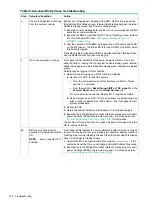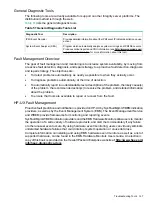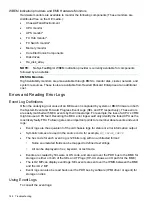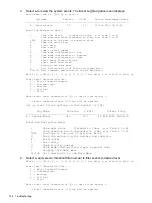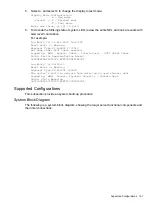
Basic and Advanced Troubleshooting Tables
The following troubleshooting tables are designed for use by both trained and untrained support
personnel. They should be the first tool used to determine the symptom(s) or condition of a
suspect server. Be aware that the state of the front panel LEDs can be viewed locally, or remotely
(using the
vfp
command from the iLO 2 MP).
The tables are designed to cover troubleshooting symptoms from AC power-on up to booting
the operating system (OS), specifically in Steps 1-5. In most cases,
identifies the step number where troubleshooting should begin in the
“Basic Entry Class Troubleshooting” (page 137)
. Alternatively, you can skip the
, and
start with Step 1 in
, sequencing through the table steps to locate the symptom/condition
most descriptive of your current server status; this will become the first step in your troubleshooting
procedure. Where appropriate, an action or actions prescribed in the
Action
column of
is followed by a reference to the corresponding subsection of this chapter for further information.
Figure 49 Front Panel LEDs
NOTE:
In
, the Unit Identifier (UID)/Locator LED has not been included, because it is
not used directly for troubleshooting rx6600 servers. However, indirectly, it can provide useful
system information; for example, when it is blue, this is an indication that the BMC is working.
Similarly, the INIT Button, which is a momentary switch with pinhole access, that is used to cause
a system INIT or Transfer of Control (TOC), is not discussed in the following tables either. It
basically is like a system reset, preserving the entire memory image, so that you can obtain a
crash dump and receive OS error information. This button can be used to recover a hung system,
and to obtain information useful for debugging -- it is less harsh than a power reset.
NOTE:
In
, LED states indicating error conditions are provided in bold, italic, uppercase
(for example,
FLASHING AMBER
).
displays the front panel LED states.
136
Troubleshooting



















